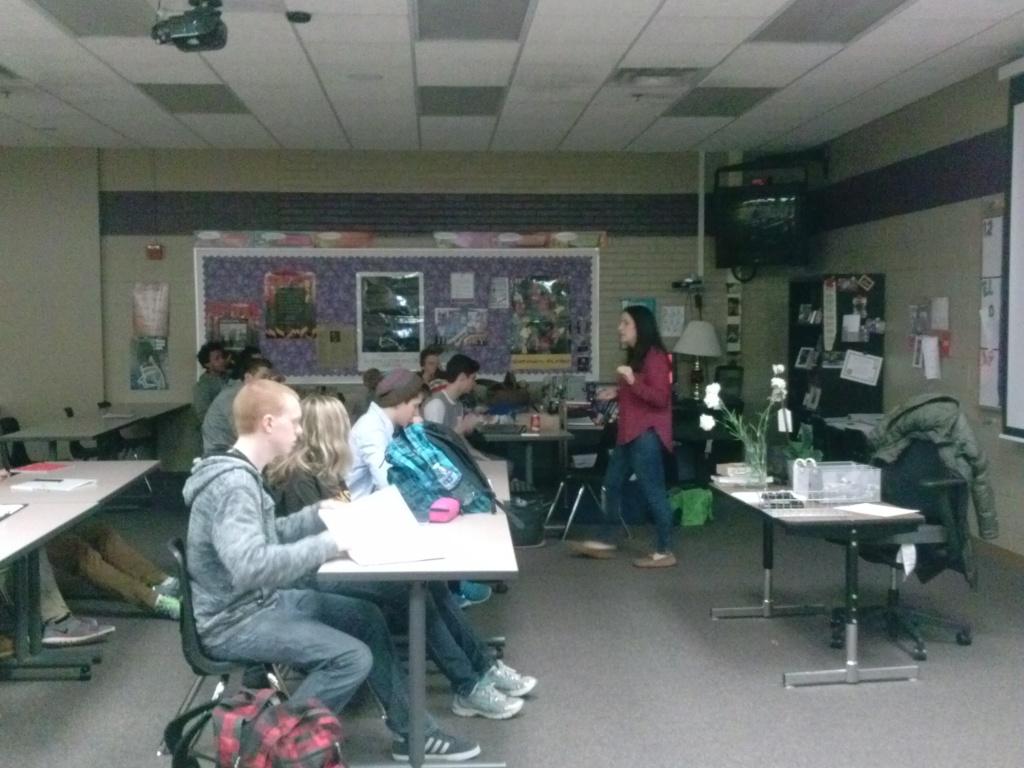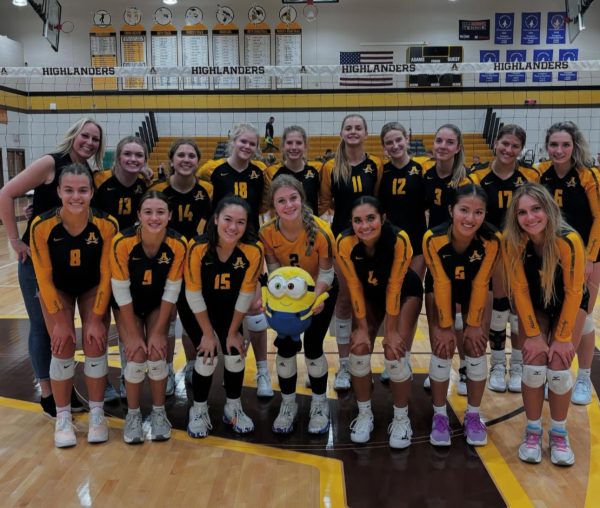APUSH Course Undergoes Changes
Adams APUSH class taught by Mrs. Tracye Schwartz
The Advanced Placement United States History (APUSH) course and exam are undergoing changes this year. The exam will include a five-minute time increase for the multiple choice section and a five-minute decrease for the written portion. The test will also feature a shift in focus which will alter the way the course is taught.
The course’s changes were implemented by the College Board, the company responsible for the creation of all AP examinations and curriculums. Here at Adams, both Mrs. Allison Danielson and Mrs. Tracye Schwartz teach this course.
“They’ve been talking about doing it for years because APUSH was the only class that hasn’t changed since they first developed the curriculum and the test. So this is the first change that’s ever happened to APUSH. They picked it, and we have to figure out how to teach it,” said Danielson.
The biggest change to the course will be in the thematic focus.
“There are seven different historical themes, and everything in that time period falls into that theme. So we’ve structured the lesson plans to focus on smaller and more reflective pieces that streamline information,” said Mrs. Schwartz.
Some of the themes include Work Exchange and Technology and Peopling and Immigration.
“The goal of the themes is to try to put US history into different concepts and show how these concepts have changed over time. This is what you do normally in a history class; there’s just more of an emphasis. So the College Board picked them [the themes], defined them, and picked the questions. We have to get the kids to answer them,” said Danielson.
Danielson explained how this shift in focus will ultimately result in changes to the actual AP exam.
“For the new test, a lot of the questions are reflective of the themes. For example, a question might ask how race relationships in the 60s were impacted by pre-Civil War slavery. The themes kind of guide the questions whereas in years past, questions were just fact-based and relied upon memorization like ‘What’s the 13th amendment?’” said Danielson.
Naturally, the nature of the class’s assignments have also changed in order to accommodate the changes made to the curriculum.
“Now the assignments are all about themes. So, for every chapter, they [students] need to write about how the theme is shown in the chapter. We just finished reconstruction so an example of a question would be ‘How has identity changed during reconstruction?’ And for every time period, students get a list of key terms,” said Danielson.
Students seem to be responding well to the course’s changes.
“I think that the historical themes definitely help me to view the historical concepts we are studying differently. It gets me to think about the cultural and and social impact of events and how they are all related,” said sophomore Jacob Jaumotte.
“I feel like the course is challenging, but the rigour is preparing us for the exam and the new themes help to make the information easier to group and understand,” said sophomore Adrianna Waack said.
“It has been a challenge, but it’s nothing that the kids can’t handle and they are doing well on the practice tests,” said Schwartz.
The dynamic of the exam is certainly different, but students are reacting positively to the new streamlined design of the course.







